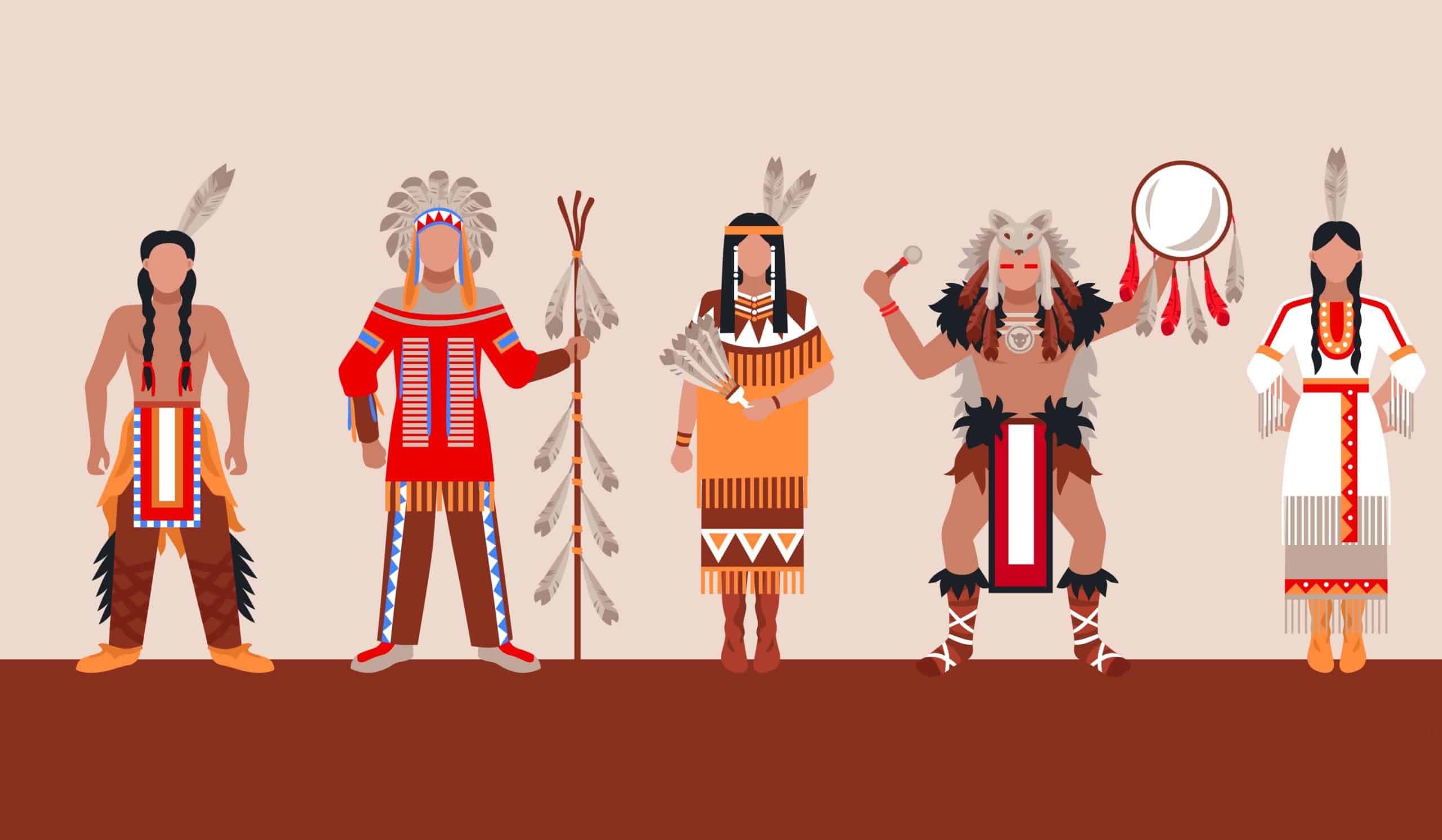When Christopher Columbus landed in the Caribbean more than 500 years ago, he did not know that the American continent existed. He thought that he had landed in the Indies, which is how the Europeans used to call Asia back then. So, he referred to the people he met there as Indians.
Columbus made four voyages to the Americas. During these four voyages, he explored the Caribbean in great detail. He also explored the coastal areas of Central and South America to some extent.
The Spanish (and other European) explorers who came after him ventured deeper into other parts of the American continent as well - North America, Central America, and South America. They met different kinds of people there, like the Aztecs, the Maya, etc. These native populations were the original inhabitants of the Americas. But the Europeans defeated them, displaced them, and settled in the Americas.
As a result of this colonization and the European diseases, most of these native populations were almost wiped out. Only a very small portion of them remain today.
Over the past 500 years, these people have been given various names - Native Indians, Native Americans, American Indians, Amerindians, etc.
Today, we refer to these people as the Indigenous Peoples of the Americas.
But who were these people? Where did they come from? And, Why did they come to the Americas? Continue reading to find out.
Where did the Indigenous Peoples of the Americas come from?
The first humans came into existence more than two million years ago. Since then, our ancestors have evolved, moved to other parts of the world, and even created some impressive civilizations.
But while our ancestors were busy leaving their mark all around Europe, Asia, and Africa, the American continent remained untouched. It did not even see a single human for the most part of this human history. But all this changed in the last ice age, which ended around 11,700 years ago.
During the last ice age, the average global temperature was around 8°C lower than it is today. So, several countries were completely covered in ice and tall glaciers, and hence, were uninhabitable. But since so much water was in the form of ice, the global sea levels were significantly lower. As a result, a large area of land appeared between Alaska and Siberia, where the Bering Sea is today. You could consider this area as a bridge between Asia and America. Hence, it was called the Bering Land Bridge, or simply Beringia.
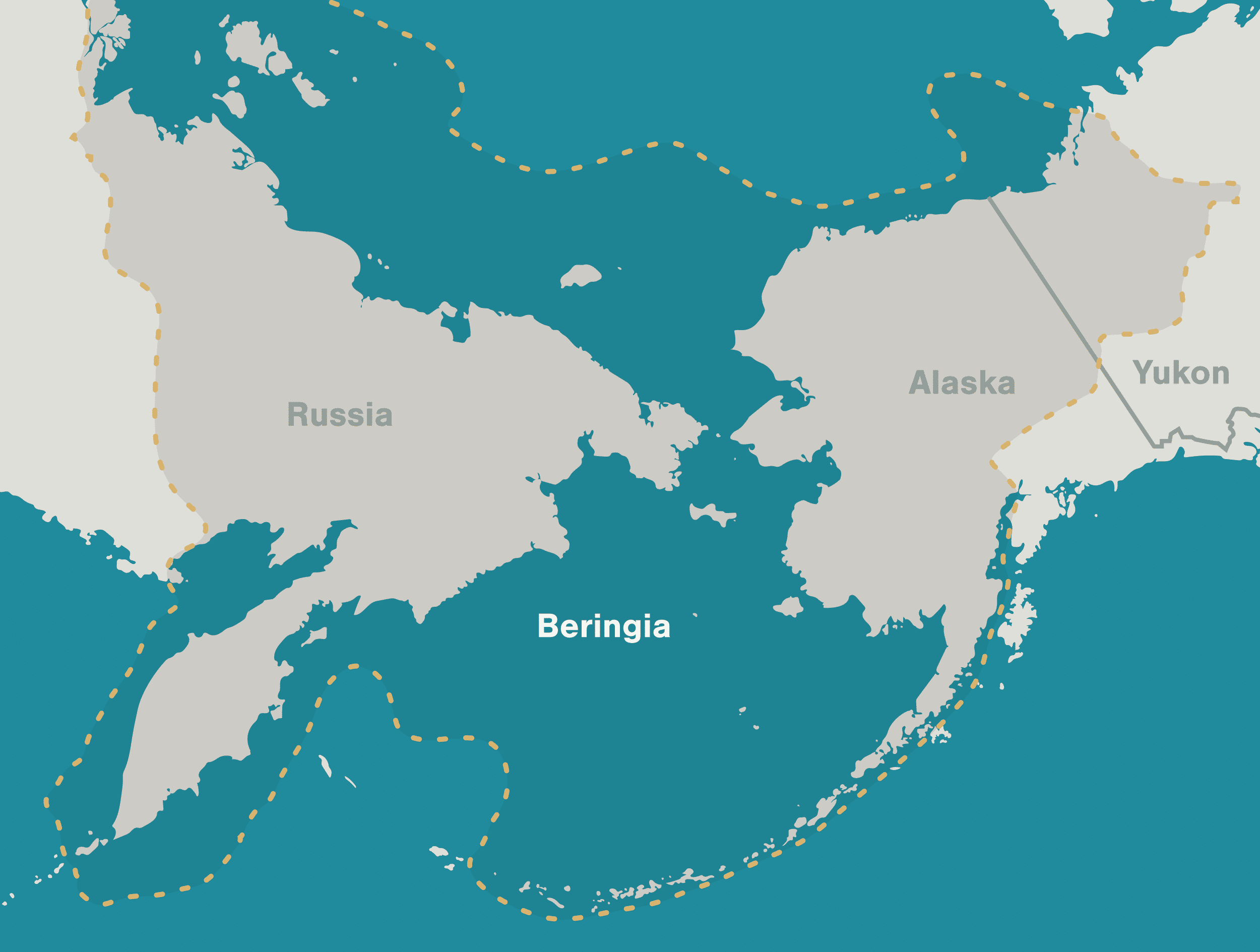
An outline of Beringia (Picture credits)
Migration from Siberia to Beringia
Beringia was a bit damper than its neighboring Siberia. So, it would have had lots of woody shrubs and trees. Hence, Beringia became an ideal environment for large herbivorous animals like bison and mammoths, according to Scott Elias, who reconstructs past climates and works as a professor in Royal Holloway, University London.
The early humans, who were hunter-gatherers, could have easily survived by hunting these animals. Moreover, they could have used the woody shrubs and tree barks to ignite the bones of these animals. After all, the bones of big animals have a lot of fat in their marrows, and fat can be burned.
Thus, Beringia provided a better chance of survival for human beings. So, some early hunter-gatherers left their dry, icy homeland of Siberia behind and moved to Beringia.
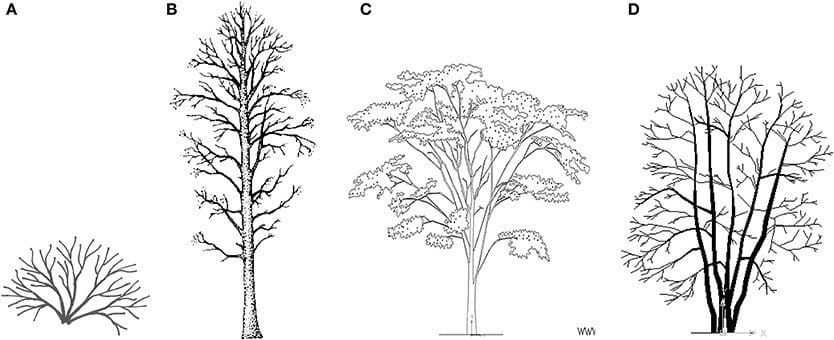
Four types of woody plants: (A) Shrub, here with five stems, branching as in the basic model (about 50 cm tall). (B) Tree with the main stem throughout the plant. (C) Tree with a short main stem with many branches, forming most of the plant. (D) Tree with multiple stems. (C,D) are from Ceco.NET, (B) is from Natural Resources Canada (red alder; tidcf.nrcan.gc.ca), and (A) is from Researchgate.
But when did these people move to Beringia? How long did they live there? And when did they leave Beringia and move to the Americas?
These were some of the questions that were puzzling historians for the most part of the last century. But two significant discoveries made in the last two decades have helped them find the answers they were seeking.
The Beringia Standstill Hypothesis
In 2007, the Estonian geneticist Erika Tamm and her colleagues investigated 623 mitochondrial DNAs from Asia and America. Their investigations revealed that the ancestors of the native Americans were genetically very different than their Asian sister groups.
But for them to become so genetically different from their Asian counterparts who stayed back in Siberia, they must have stayed somewhere completely isolated for thousands of years.
So, Erika and her colleagues theorized that the Asians who traveled to Beringia did not move to the Americas immediately. Instead, they stayed in Beringia for thousands of years. During this time, their genes changed completely. Their theory came to be known as the Beringian standstill hypothesis. It is one of the most widely accepted theories regarding the peopling of the Americas.
In 2017, Lauriane Bourgeon and her team found evidence of human life 24,000 years ago in the Bluefish caves in Western Canada. Since this is where Eastern Beringia was located, it proves that early humans moved to Beringia almost 24,000 years ago.
But at that time, the icy sheets covering various parts of the world were at their maximum heights. So, they couldn't enter North America because Canada, completely covered in ice, would have blocked their entry.
Therefore, they might have stayed in Beringia for almost ten thousand years. Then, around 15,000 years ago, they started moving rapidly and settled in different parts of America.
Migration from Beringia to the Americas
There are different theories as to how they moved to different parts of America. When the ice started melting and the sea levels started rising 14,000 years ago, a corridor opened through the ice sheets in Canada and the northern USA.
This corridor was about 1500km long. But it wouldn't have been suitable for human travel until 12,600 years ago. And when it became traversable 12,600 years ago, the Beringians could have walked through it and reached the southern part of North America.
But recent archaeological explorations found evidence of human activity in the USA 15,000 years ago. More evidence of human activity was found in Chile dating back to somewhere between 14,500 and 18,500 years.
So, these early humans might not have walked through the ice-free corridor, after all. Instead, they might have built primitive wooden boats and sailed along the Pacific coast long before the ice melted. Eventually, they would have reached the habitable parts of North and South America. There they settled and, several thousands of years later, became the Indigenous Inhabitants that Columbus saw.
Now that we know where the Indigenous people of the Americas came from let's find out more about the different Indigenous Peoples and where they were located.
Caribbean Islands
Columbus met two types of people in the Caribbean. He named them the Caribs and the Arawaks. The Caribs were those who were friendly to him, and the Arawaks were those who were hostile to him.
Columbus claimed that the Caribs were cannibals who ate humans. But Caribs did not practice widespread cannibalism. They did not eat humans because they liked the taste of it. They did so as a part of a ritual. The Arawaks, too, had a similar custom.
But even if it wasn't true, Columbus used his claim of Caribs being cannibals as a pretext to get permission from the Spanish monarchs to enslave these Indigenous Peoples.
Once he got permission, he enslaved these people. Then he demanded them to produce a fixed amount of gold or cotton every 3 months. Those who failed were tortured, raped, and killed. As a result, the populations of these two Indigenous Populations reduced considerably.
Today, only around 3,400 Caribs and 10,000 Arawaks are in existence today.
South America
Even though many Indigenous Peoples lived in South America, the most significant among them was the Inca. The Inca began as a small pastoral tribe in Cusco, in present-day Peru, around 1200 AD.
For the most part of their history, they were a small tribe. Only in the 15th century did they start expanding. But they expanded rapidly and became the most dominant culture in South America very quickly. But they didn't stop there. They went on to establish the largest empire on earth at that time - The Inca Empire. And they did all this within a span of 100 years.
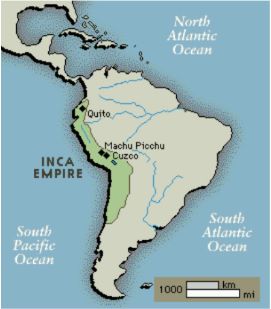
A map of the Inca Empire, ca. 1527AD (Picture credits)
But even the largest empire on earth couldn't escape from the evil clutches of the European colonists. Suffering from the European diseases and the torture inflicted by the colonists at the same time, the population of these native people fell by almost 93% within a century.
Today, the descendants of this native population live in South America. They are spread out across various countries - Columbia, Ecuador, Peru, and Chile.
Central America
The most significant Indigenous Peoples who lived in Central America were the Aztecs and the Maya.
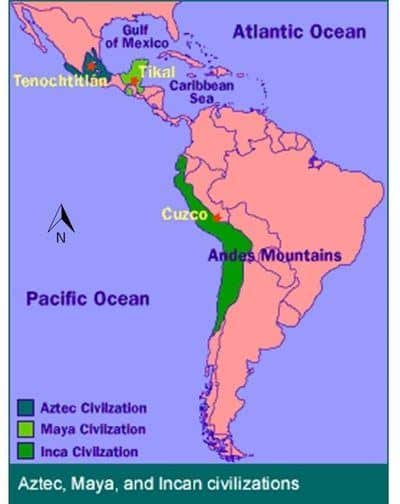
A map of the Inca, Maya, and Aztec Empires (Picture credits)
Like the Inca, the Aztecs, too, rose to prominence very quickly. But they, too, were decimated by the European diseases and the Spanish conquest.
Today, in the 21st century, the descendants of the Aztecs live in the rural areas of Mexico. They mostly work as farmers or sell handcrafted items to make a living.
Unlike the Aztecs and the Inca, the Maya have a long history. They started as a small agricultural tribe in 1800 BC. But they gradually rose to prominence and established several powerful city-states around 250 AD. Each of these city-states housed 5,000 to 50,000 people. But even though these city-states shared cultural traits, they did not unite politically under a single empire. Instead, they competed among themselves as well as with other empires for power. Today, we collectively refer to these Indigenous Peoples as the Maya.
But despite the prosperity of these city-states, the Maya eventually abandoned most of them in the 9th century. The reasons for their actions are still not clear. But this native population crumbled far before the arrival of the Europeans. By the time the Europeans arrived, the remnants of a once-great civilization were trying to rebuild. So, it was easy for the Europeans to overpower them and defeat them.
Today, the descendants of the Maya can be found in several countries in Central America.
North America
Several Indigenous Peoples lived in North America before the arrival of Columbus. Among them, the Mississippian culture was the most prominent. It originated in the Mississippi River valley around 800 AD and slowly spread outwards.
But the Mississippian culture wasn't a single tribe. Rather, it was a collection of several societies. Some of them were agrarian societies, while others were hunter-gatherer societies. In stark contrast, there were also societies whose people followed a sedentary lifestyle. But despite their differences, the peoples of the Mississippi culture followed similar traditions, like building large earthen mounds.
The Mississippian culture comprised a series of cities and satellite villages, which were interlinked by loose trading networks. Among these cities, the largest one was Cahokia, which would have been an important religious center back then.
But unlike the civilizations of Central and South America, the Europeans were not able to defeat these people easily. Indeed, they suffered high casualties and had to withdraw their attack. But the diseases they brought with them stayed back and decimated these peoples, who had no immunity against them. Each individual tribe in the Mississippi culture suffered greatly due to these diseases. This undermined their social structure, and many of these tribes later collapsed.
So, when the Europeans returned a hundred years later, many of these tribes had completely vanished, leaving vast areas of North America uninhabited.
Some of the societies which survived formed new tribes to respond to European colonization. In order to keep track of these different groups, geographers have classified them into different 'culture areas.' These culture areas are:
- The Arctic
- The Subarctic
- The Northeastern woodlands
- The Southeastern woodlands
- The Great Plains
- The Great Basin
- The Northwest Plateau
- The Northwest Coast
- California
- The Southwest
